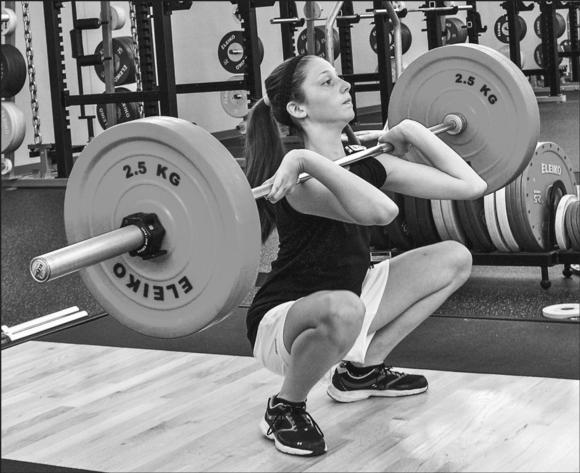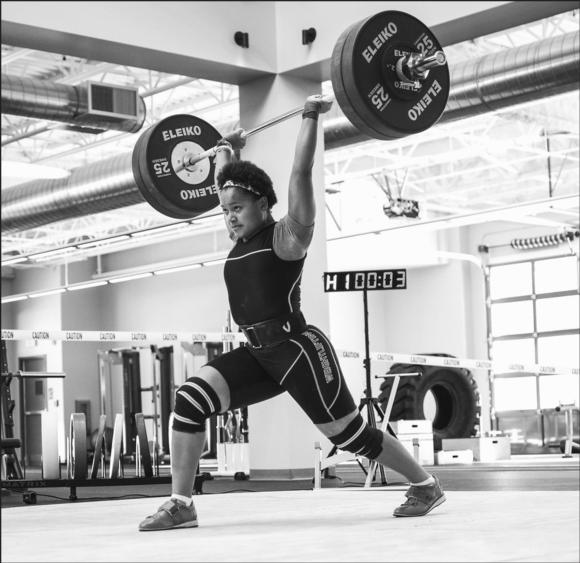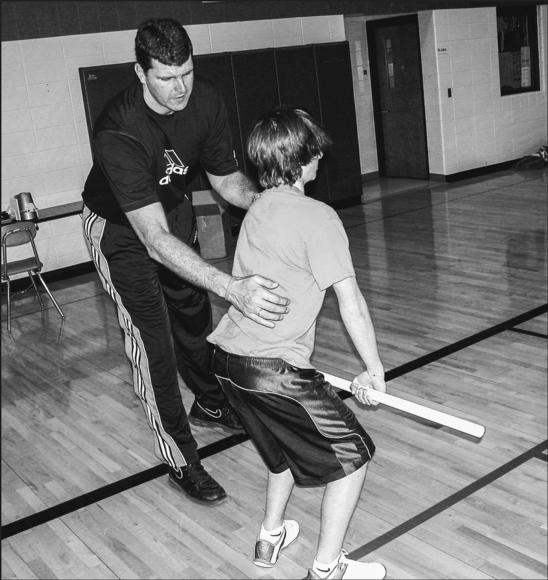Who should use the Bigger Faster Stronger readiness program?
This is an excerpt from Bigger Faster Stronger 3rd Edition by Greg Shepard,Kim Goss.
Although many athletes will be ready to jump right into the BFS set - rep system, others are more suited to starting with the BFS Readiness Program. Here are some examples.
Middle School Male and Female Athletes
Most athletes or physical education students in the seventh grade should begin with the BFS Readiness Program. Some orthopedic doctors believe that adolescents of this age are too young to start any kind of weight training, but the research proves otherwise, and we believe that the benefits outweigh the potential risks.

The BFS Readiness Program is designed for beginners with an emphasis on teaching optimal technique first over lifting heavy weights.
Without weight training, few young people can reach their athletic potential. One of the major concerns about weight training for young athletes is that it could damage the epiphyseal (growth) plates. Although injury to the epiphyseal plates may cause bone deformity, the risk that this will occur with weight training is no greater than it is with most sports. As for the belief that weight training will stunt growth, premature closing of the epiphyseal plates is related primarily to hormonal influences, not injury. The late Mel Siff, an exercise scientist whose doctoral thesis examined the biomechanics of soft tissues, addressed this subject.
"It has never been shown scientifically or clinically that the periodic imposition of large forces by weight training on the growing body causes damage to the epiphyseal plates," Siff says in his book Facts and Fallacies of Fitness (1998). "It is extremely misleading to focus on the alleged risks of weight training on children when biomechanical research shows that simple daily activities such as running, jumping, striking, or catching can impose far greater forces on the musculoskeletal system than very heavy weight training."
Siff also notes that bone density scans have proven that young people who do competitive weightlifting (i.e., the snatch and the clean and jerk) have higher bone densities than children who do not use weights, and clinical research has not shown any correlation between weight training and epiphyseal damage. Siff's comments are supported by an extensive Russian study on young athletes, published in a book titled School of Height, which concluded that heavy lifting tends to stimulate bone growth in young athletes rather than inhibit it.

Research shows that young athletes who compete in weightlifting have higher bone densities than children who do not use weights.
Risk of injury is another area of concern for coaches and parents. Many studies have measured the rate of injuries associated with weight training compared with the injury rate in other sports. For example, a study published in 2001 in the Journal of the American Academy of Orthopaedic Surgeons cited research showing that in children aged 5 to 14 years, the number of injuries from bicycling was almost 400 percent greater than the number of injuries from weightlifting.
In a review paper on resistance training for prepubescent and adolescents published in 2002 in Strength and Conditioning Coach, author Mark Shillington reported that only 0.7 percent (or 1,576) of sport-related injuries in school-aged children were caused by resistance training, compared with 19 percent caused by football and 15 percent caused by baseball. Dr. Mel Hayashi, a noted orthopedic surgeon, states, "The BFS Readiness Program should provide great benefits to the junior high athlete. I have no concerns as long as the athlete has good technique." Dr. Hayashi has been a chief orthopedic surgeon at the Olympic Games and is a former chief resident at the Mayo Clinic.
The truth is that weight training and competitive lifting are among the safest activities an athlete can participate in. For example, renowned Russian sport scientist Vladimir Zatsiorsky, in his textbook Science and Practice of Strength Training (1995), had this to say about the dangers of weight training: "The risk of injury from a well-coached strength training program has been estimated to be about one per 10,000 athlete-exposures," with an athlete-exposure being defined as one athlete taking part in one training session or competition. "Compared to tackle football, alpine skiing, baseball pitching, and even sprint running, strength training is almost free of risk." The National Strength and Conditioning Association (NSCA) is considered the governing body of the strength coaching profession, and in 1985 published a position paper and extensive literature review on strength training for young athletes. This paper was updated in 1996, and in another update published in 2009, the authors said that "… research increasingly indicates that resistance training can offer unique benefits for children and adolescents when appropriately prescribed and supervised" (Faigenbaum, Kraemer, Blimkie, Jeffreys, Micheli, Nitka, and Rowland, p. 1).
The success and popularity of BFS clinics are proof of the merits of early weight training. As young athletes strive to achieve the highest levels in competitive sport, they must participate in serious training at a younger age than the champions of the past did. This commitment is the price of success. Athletes are starting competitive sports at a younger age, including contact sports such as football, and as such they are subjecting their bodies to higher levels of stress than ever before. If young bodies are to handle the stress of this training, weight training is essential.

Instruction for weightlifting can begin with PVC pipes so that athletes can learn how to perform lifts properly.
Many strength coaches at major universities throughout the United States have been asked when athletes should start weight training. The vast majority responded, "In junior high." In addition, the countries of the former Eastern Bloc often start weight training at age 12.
In the sport of weightlifting, the most successful coach in the sport is Bulgaria's Ivan Abadjiev. Speaking at a seminar in Rhode Island in 2011, Coach Abadjiev was asked at what point young athletes could begin lifting maximal weights. His response was at eight years of age! Although BFS does not endorse this recommendation, it does suggest that there is definitely a paradigm shift in this area. In fact, in the 2014 US Senior National Weightlifting Championships, then - 13-year-old Clarence Cummings clean and jerked a senior American record of 337 pounds (153 kilos) at a bodyweight of 136 pounds (62 kilos), and the following year he broke the youth record in the 152-pound (69-kilo) class with a lift of 385 pounds (175 kilos)! He is now a junior world champion and world record holder.
Weight training is also one of the best ways to build self-confidence. A 7th grader can receive just as much satisfaction by going from 85 to 100 pounds (39 to 45 kilograms) on the bench press as a 12th grader can by going from 285 to 300 pounds (129 to 136 kilograms). Of course, strict supervision and proper technique are essential to making the BFS Readiness Program work in middle school.
Learn more about Bigger Faster Stronger, Third Edition.
More Excerpts From Bigger Faster Stronger 3rd EditionSHOP

Get the latest insights with regular newsletters, plus periodic product information and special insider offers.
JOIN NOW


